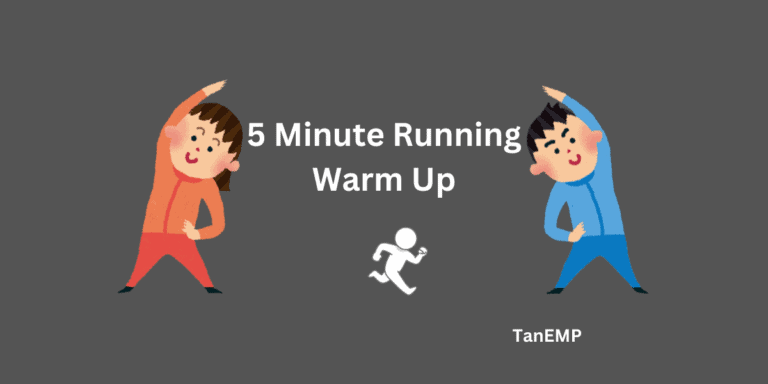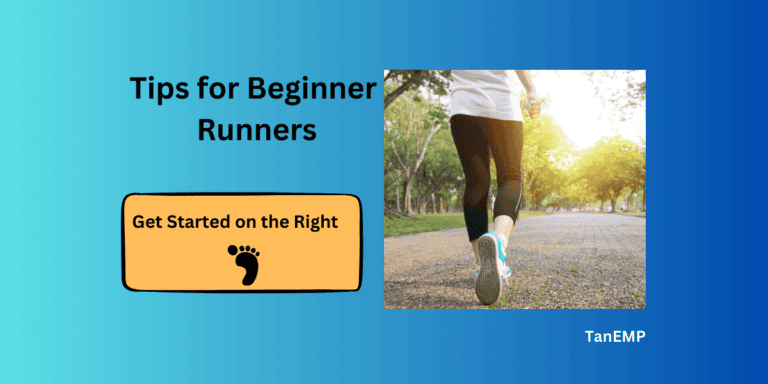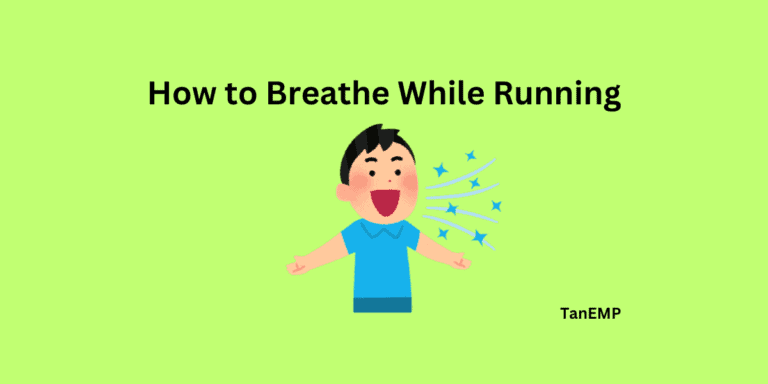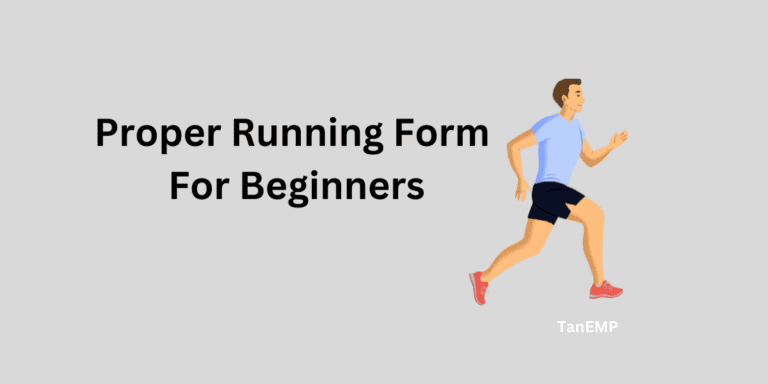Run Walk Method for Beginners: How It Made Running Fun in 2025
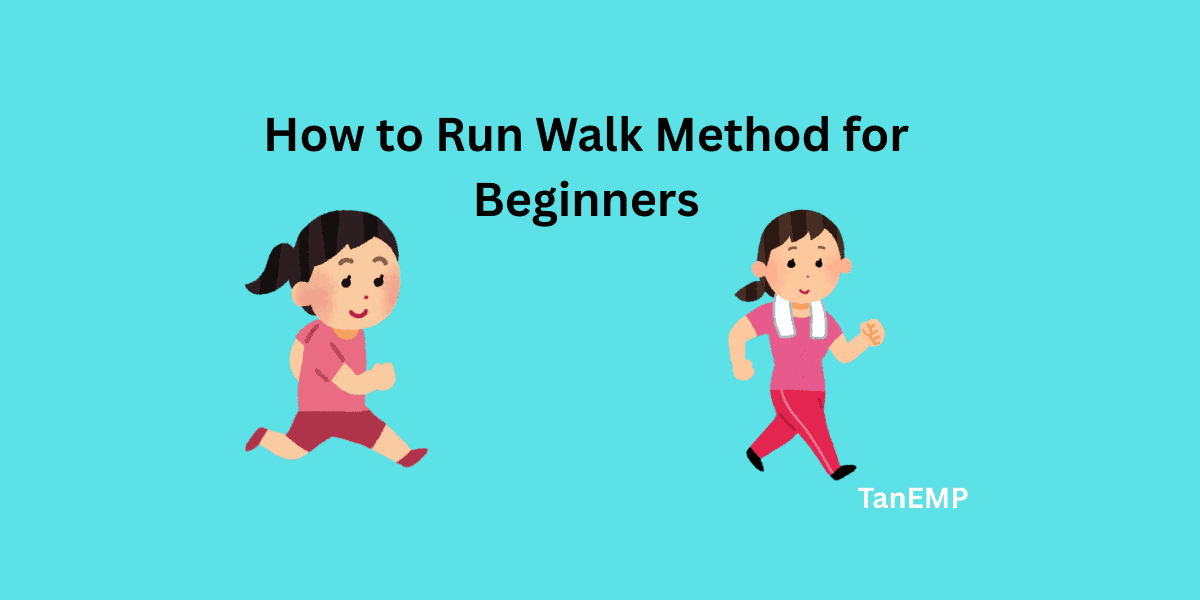
Running wasn’t my thing at first. I found it boring! Like many beginners, I tried to push too hard right away, which is a mistake.
As a chiropractor, I knew there had to be a better way to start.
That’s when I discovered the run-walk method, and it changed everything for me.
This simple approach lets you mix running and walking based on what your body can handle. I trained using this method, and now I enjoy running!
Whether you want to finish your first 5K or just get moving again, this method works because it meets you where you are. If you’re brand new, check out our full guide on how to start running.
The run-walk method is one of the best tips for beginner runners. It’s safe, simple, and helps you build confidence quickly. Let’s look at how it can help you start your running journey at a pace that works for you.
What Is the Run-Walk Method?
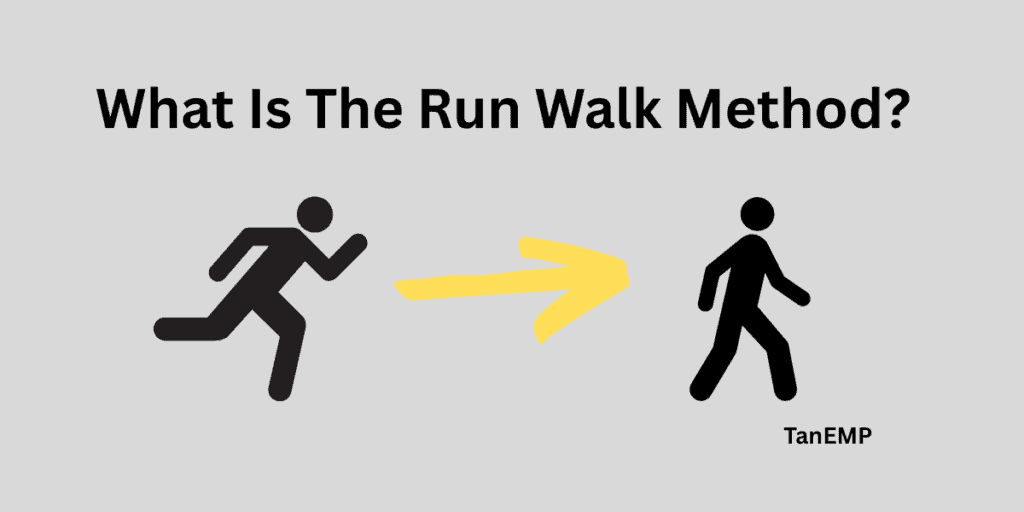
The run-walk method is a simple and easy way for a new runner to start running.
It was first introduced in the 1970s by Olympian Jeff Galloway.
This method mixes short running sessions with short walk intervals. That way, your body gets time to rest and strengthen during the workout.
It’s a great choice for novice runners, older adults, people coming back from an injury, or anyone starting again after a break.
This method helps you avoid getting hurt and builds your strength over time.
Benefits of the Run-Walk Method for Beginners
The run-walk method has a lot of great benefits, especially for beginners.
It helps your body get used to running longer distances without wearing you out.
Many runners who return after a break or injury often try to run at the same pace they did before. This can lead to injuries from overtraining.
That’s why starting with the run-walk method is a smart choice. It helps you ease back into running safely.
Adding short walk intervals gives your body a break. They also help promote blood flow, which helps your muscles recover. This helps stop repetitive stress on your muscles and gives you time for active recovery.
Some easy-to-see benefits of the run-walk method:
- Lowers your chance of injury by resting tired muscles
- Builds endurance slowly and safely
- Stops overtraining and helps avoid soreness
- Makes running more fun and less stressful
- Keeps you motivated and strong in your mind
- Helps cool your body during longer runs
- Speeds up recovery after workouts
- Puts less pressure on weaker parts of the body
This easy method enables you to run smarter and feel better, no matter your experience.
How to Get Started with the Run-Walk Step-by-Step

Here’s a simple way to begin using the run-walk method, even if you’re new to running:
Step 1: Warm Up (5 Minutes)
Start with a brisk walk to get your body ready. Follow this 5-minute running warm-up to prepare safely. A good warm-up helps prevent injury and makes your first run segment feel easier.
Step 2: Begin Your First Run Segment
Run for 30 seconds at a relaxed pace. This short run segment should feel easy, like you could hold a short conversation.
Step 3: Walk Slowly to Recover
After running, walk slowly for 90 seconds. This recovery phase helps your heart rate come down and gives your muscles time to rest.
Step 4: Repeat the Pattern
Keep repeating this run-walk cycle for 15 to 20 minutes total. Start with 8 to 10 rounds, and build up as you go.
Step 5: Cool Down (5 Minutes)
Finish with a slow walk and light stretches. Cooling down helps your body recover and prevents soreness.
✅ Pro Tips for Beginners
- Keep your run segments short at first.
- Walk slowly between runs to avoid burnout.
- As your endurance grows, increase your running time for longer periods.
- Run 3 to 4 days a week, with rest days in between.
Sample Run-Walk Training Plans for Beginners
If you’re new to running, a run-walk training plan is a smart and easy way to build up your stamina. You won’t feel too tired or burned out. One of the best ways to start is with a Couch to 5K style plan. These plans last about 8 to 10 weeks and help you increase your running time slowly while keeping a steady and safe pace.
Total beginners can start by running for 20 seconds and then walking for 1 to 2 minutes. The goal is just to finish each training run feeling good, not worn out.
If you’re one of the intermediate runners, especially if you’re used to walking, you can start with a 1-minute run and a 1-minute walk. As your body gets stronger, you can make the running parts longer and the walking parts shorter. This helps prevent overall fatigue.
Try running 3 or 4 days a week, and take rest days in between so your body has time to recover.
To stay on track, print or download a simple training chart. Seeing your plan and progress can help keep you motivated and consistent.
6-Week Run-Walk Training Program for Beginners
| Week | Workout (3–4 days/week) | Goal |
|---|---|---|
| Week 1 | Run 20 sec / Walk 90 sec × 8 rounds | Build confidence, get moving |
| Week 2 | Run 30 sec / Walk 90 sec × 8–10 rounds | Ease into a longer run time |
| Week 3 | Run 1 min / Walk 1.5 min × 8 rounds | Improve stamina |
| Week 4 | Run 1.5 min / Walk 1 min × 6–8 rounds | Strengthen the cardiovascular system |
| Week 5 | Run 2 min / Walk 1 min × 6–8 rounds | Boost endurance |
| Week 6 | Run 3 min / Walk 1 min × 5–6 rounds | Prepare for longer run intervals |
✅ Tips:
- Warm up for 5 minutes with brisk walking or light stretching
- Cool down with 5–10 minutes of slow walking and static stretches
- Listen to your body—rest days are just as important as run days
- Make sure you’re breathing through your belly instead of your chest. This guide on how to breathe while running can help.
- Optional: Repeat any week if it feels too tough to move forward
Common Mistakes to Avoid with the Run-Walk Method
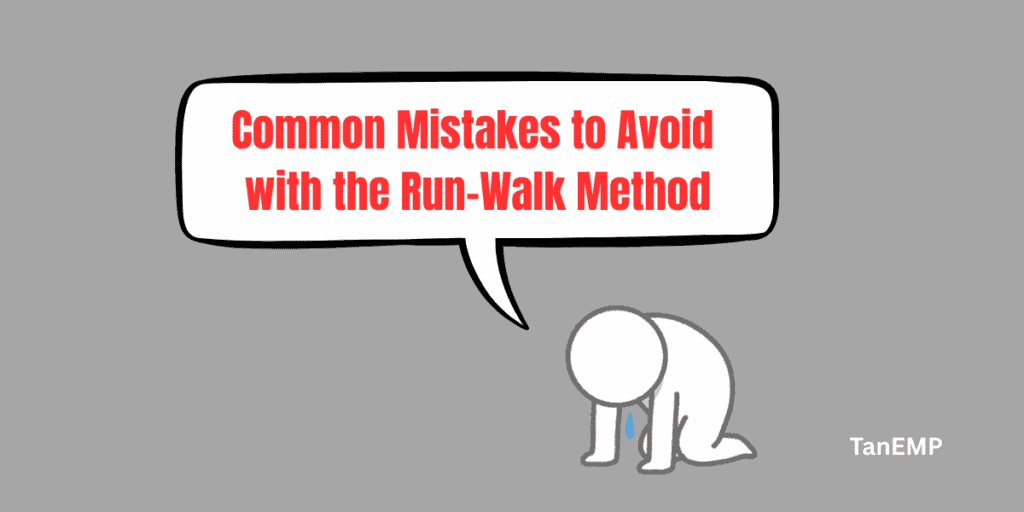
It’s easy to make mistakes when starting the run-walk method.
One common one is skipping warm-ups or cool-downs. Always stretch before and after your run. It helps your body feel better and lowers the chance of pain.
Running too fast can also alter your running form. Learn proper running form for beginners to avoid injury and stay efficientYou’ll tire more quickly and experience increased stress rather than less overall fatigue. This can also alter your running form, potentially leading to injury.
Don’t compare yourself to experienced runners. Go at your own pace—it’s not a race.
Trying too much too soon can lead to burnout. Rest days matter.
Keep track of your progress so you’ll know when to improve.
Use foam rollers or a massage gun to help different muscle groups recover.
Stick with it. Progress takes time!
Tips for Long-Term Success Using the Run-Walk Method
To do well with the run-walk method over time, you need a plan that helps you stay strong without getting too tired.
No matter if your goal is a 5K or even a half marathon, taking small steps really helps.
Here are some easy tips to stick with your training program and avoid problems:
- Increase your run intervals slowly. Try every 1–2 weeks, but only if your body feels ready.
- Stay on schedule, but don’t push too hard. Rest is just as important as running.
- Keep track of your progress. Write down your distance, time, or how much energy you have after each run.
- Add simple strength and stretch exercises. Bodyweight moves and light yoga can help your running.
- Match your recovery time to your running. If you run three days a week, spend at least that much time on recovery.
- Use static stretches, foam rollers, massage guns, or get a massage to help your body heal.
- Stay motivated. Join a running group, use an app, or set small goals to keep going.
No matter if you run in the morning or evening, the run-walk method works. Not sure when to train? Compare running in the morning vs night.
Wrap Up
The run-walk method isn’t just for beginners.
It’s a smart way to run at your own pace and enjoy the journey.
You don’t need to push too hard or run nonstop to see progress. This method builds confidence, stays strong, and keeps you going, whether you’re chasing your first mile, a 5K, or just want to feel better moving again.
So lace up your shoes, choose your intervals, and take that first step.
Run a little, walk a little. You just need to keep moving forward.
You’re ready. Let’s go!
Want to make running a daily habit? Here are the benefits of running in the morning or benefit of running at night to help you decide when to lace up.
Frequently Asked Questions About the Run-Walk Method
What is a good run-walk ratio for a beginner?
A great starting point is a 30-second run and 90-second walk (30:90). This helps your body adjust without getting tired too fast. As you build endurance, try a 1:1 or 2:1 ratio of running to walking. The key is to avoid burnout and build consistency over time. You can refer to the 6-week training program above.
How do I do the run-walk method?
To use the run-walk method, simply alternate short run intervals with walk breaks. For example, run for 1 minute, then walk for 2 minutes. Repeat for 20–30 minutes. This makes it easier for beginners to start running without injury or overall fatigue.
What is Jeff Galloway’s run-walk strategy?
Jeff Galloway, an Olympian, created the run-walk method in the 1970s. His strategy includes planned walk breaks during a run to reduce stress, lower heart rate, and help novice runners finish races stronger. Many experienced runners also use his method to run long distances with fewer injuries.
What is the 3-2-1 method of running?
The 3-2-1 method refers to a gradual increase in running time. You run for 3 minutes, then 2 minutes, then 1 minute, with short walk intervals in between. It’s a fun way to mix things up and test your stamina. It’s also helpful for runners preparing for a long run or a training program like a half-marathon.
